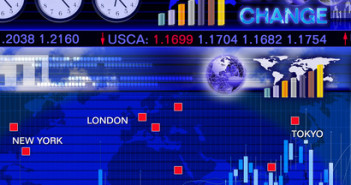It’s been a moderately positive week for the Sterling. Strong housing data and an on target revised GDP result have helped the British unit creep higher against the Greenback and hold its ground against a late rallying Euro. Both Cable and GBPEUR continue to trade in the vicinity of 4-year and 1-year highs respectively, driven by the expectation that the Bank of England (BoE) will be the first major central bank to tighten interest rates. This, according to the BoE’s own forecasts could occur as soon as early 2015. Looking forward, GBPEUR is positioned to maintain its value, with a bias to the upside given shaky economic fundamentals in the Eurozone (EZ). Meanwhile Cable faces the legitimate risk of a selloff in the medium term as the American Federal Reserve (Fed) winds down its quantitative easing program.
The Euro was a bit of a laggard all week, until this morning that is. The common currency spent most of the week on the defensive to the sterling and trading in a narrow sideways range between 1.3600 & 1.3700 versus the Greenback. However this morning’s CPI data printed +0.8% versus a consensus forecast of +0.7% and put a degree of pep in the Euro’s step. The data has led GBPEUR correct, giving up most of the week’s gains, but at the time of writing Sterling is still out front. EUR$ on the other hand has broken out and is now eyeing 1.3800, which is close to the 2-year high established in December near 1.3900. If you take a step back and look at the economic environment in the EU, namely the GDP, CPI, and unemployment landscape, it’s challenging to justify EUR$ valuations near multi-year highs. This increases the possibility of an “aha†moment in which market sentiment for the pair shifts rapidly, similar to how it did with USDCAD in January & AUDUSD in early 2013. Next week’s European Central Bank (ECB) policy announcement is a potential candidate for such a moment.
The first business week of the month is usually pretty exciting. As is the case this week, which sees both the BoE & the ECB make monetary policy announcements, as well as Non-Farms Payrolls (NFP) data released in the United States. While each event is significant, next weeks’ ECB and NPF are more hotly anticipated than normal. Meanwhile the BoE’s recent Inflation Report has built a framework of flexibility, in light of which, no meaningful policy changes are expected and thus attention is elsewhere.
In contrast to the BoE there is great anticipation for the ECB and NFP. Looking to the ECB, markets are split on whether ECB chief Mario Draghi might roll out more easing measures, specifically rate cuts—which would take rates into negative territory. Eurozone (EZ) data lately has shown a degree of economic resilience. German sentiment & unemployment remain constructive, aw well EZ GDP & CPI data recently has bested expectations, though is still pretty anemic. On the other side of the same coin, PMI results highlight ongoing bleeding and unemployment remains near record levels at 12.0%. The uncertainty keeps the tension elevated. If leading up to the announcement headlines emphasize the risk of negative deposit rates, it could weigh on the common currency.
On Friday we get NFP, arguably the most important data event on the American economic calendar. November and December of 2013 posted results of greater than 200k, and were big factors in the Fed moving forward with its Tapering program. Meanwhile January and February of 2014 saw massive and unexpected drops to 74k and 113k respectively. This along with some other recent data misses, attributed to extreme winter weather, has fueled concerns that the American recovery is losing momentum. Which has in turn led to speculation that the Fed may slow the pace of tapering. Expectations for next week’s NFP are for a result of 149k, with winter weather again expected to weigh on the outcome. A material miss on Fridaycould see the Fed distance itself from the current taper schedule, which currently includes regular measured cuts.
Further reading:Â Forex Analysis: EUR/USD Rallies to Approach Two-Year High



